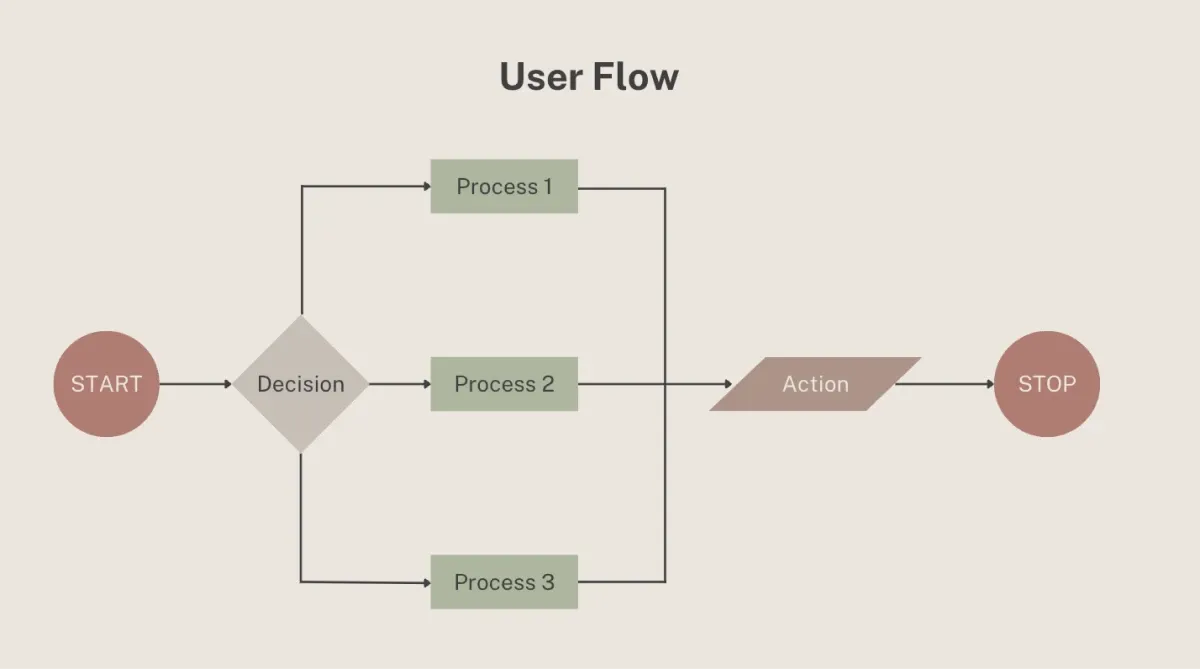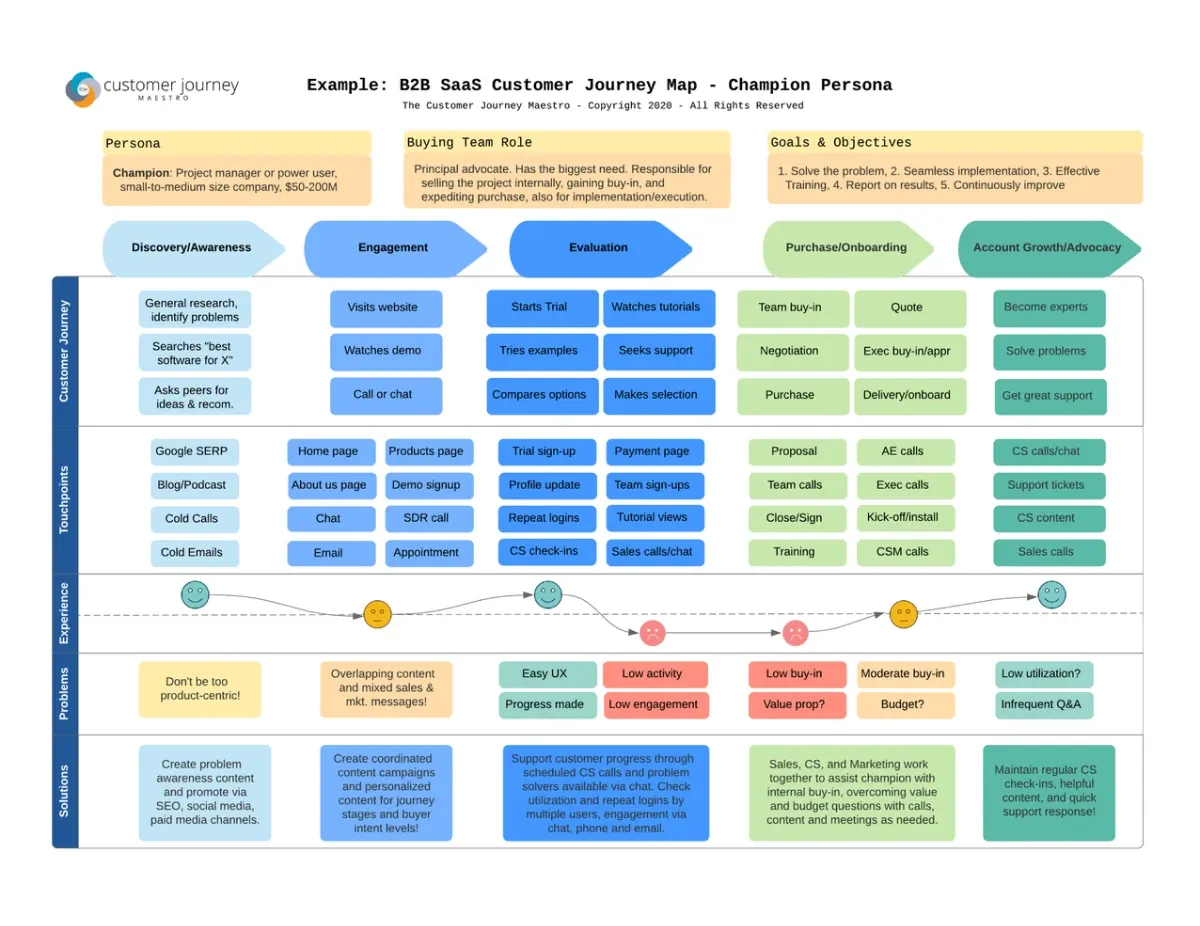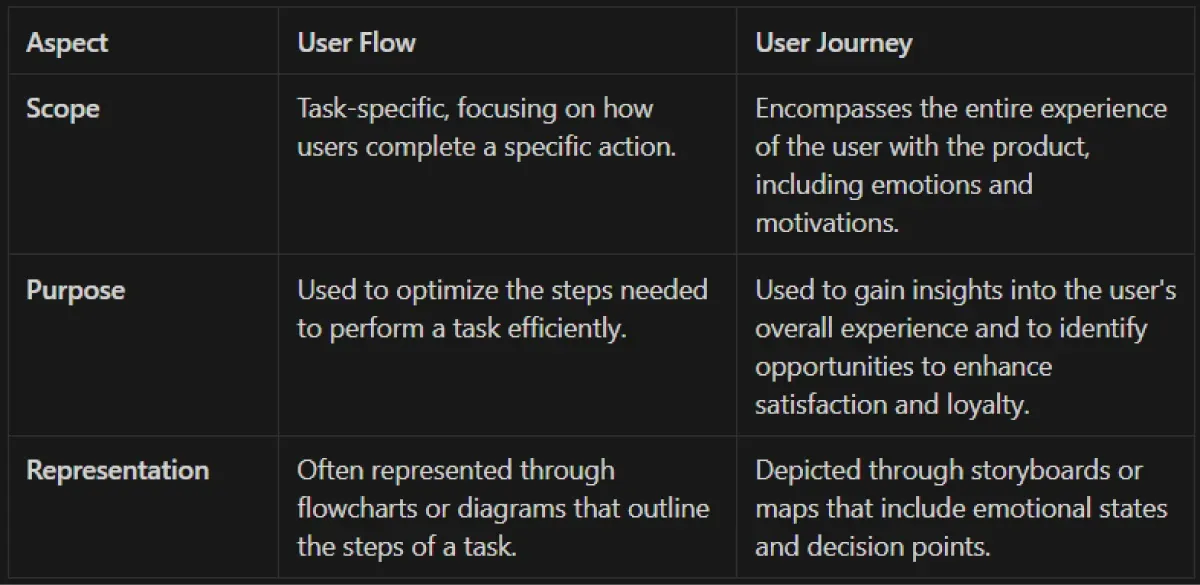Product design for $2000 please.
What's difference between user flow and user journey?
No, this isn’t Jeopardy (which hasn’t been the same since Trebek passed, by the way.)
But it’s a critical question that gets at a distinction that folks sometimes miss, or carelessly or accidentally interchange.
Both user flow and user journey are critical to the design and development of SaaS products, particularly because they are two of the best tools for mapping and understanding user behavior.
Without this knowledge,
User flow 🏄♀️
Let’s talk about user flow first.
User flow refers to the exact path users take through a website or application to complete a specific task.

This path captures each step/stage from start to finish and defines the action needed at each step toward the ultimate goal.
An easy example here is a sign-up flow.
- Users click “sign-up” and are taken to the sign-up page
- The user enters their name, email, and creates a password
- If the email and password are valid, the account is created, and the user is taken to the onboarding page. The flow is finished successfully!
- If the email and password are invalid, the user is presented with an error and re-prompted to enter information that works. The flow is not finished, but is continued until they complete it correctly.
Key aspects of user flow:
- Task-oriented: Focuses on completing a specific task.
- Sequential: Outlines the steps in the order they are taken.
- Simplification: Aims to make the process as simple and straightforward as possible.
- Visual Representation: Often illustrated with flowcharts or wireframes.
How to best visualize user flows
User flows are best depicted with flowcharts, which offer the easiest way to visually map sequential steps and stages. We’ll review some examples later.
User journey
The user journey, on the other hand, encompasses a user's overall experience with the product, from the initial awareness stage through the consideration and decision stages and potentially retention and upselling.
It's broader than user flow, considering the user's feelings, motivations, and questions at each stage of their interaction with the product.
I love this user journey map from Segment because it really explores the touchpoints and stages of the journey and visually demonstrates the emotions, pitfalls, and problems of each.

User journeys help designers and developers understand and address user needs and pain points throughout the entire experience with the SaaS product.
Key aspects of a great user journey:
- Experience-oriented: Focuses on the user's experience, emotions, and motivations throughout their interaction with the product.
- Holistic: Covers a broader range of interactions, not just a single task.
- Empathy: Aims to understand and empathize with the user's needs, frustrations, and desires.
- Storyboarding: Often represented through storyboards or journey maps that include user emotions and thoughts at various points.
Micro vs. macro
When you break down the differences between user flow and user journey, you quickly see that the biggest difference is their scope and size.

Sure their intention and the way they are best visualized varies.
But the key here is micro vs. macro views of user behavior.
If you’re a product designer at a large company, it’s likely that you’re working on a very specific area of a product. I’ve known folks who work on a set of buttons or a specific flow inside one experience. For example, if it is something like the core onboarding flow for an enterprise SaaS product or a premium upgrade for a B2C product, that flow itself could be worthy of a huge amount of research, development, and testing.
It would be misleading to say that all product designers only care about micro-user flows. However, it is fair to say that the more siloed and specific your design focus, the more you lean on user flows within a broader journey to guide your thinking.
On the other hand, product managers handling the development and design of a new product experience will absolutely be focused on the overall user journey, supported by user flows for each specific function. They inherently need a holistic focus that captures not just the nitty gritty steps in a flow, but the emotions and thoughts, and feelings in the journey.
And finally, if you’re a non-product executive, you’re likely more curious to read and give feedback on the user journey, because it’s a higher-level document. You might get your hands dirty with user flow analysis if there’s a large issue with onboarding, for example, but otherwise, it is unlikely to be a part of your day-to-day work.
The issue with user flow and user journey mapping
One of the biggest blockers for a great user journey map is a clear understanding of your user's actual intent, desires, and responses to actions. Obviously, any product manager would take more insight into all of these so that they can improve their mapping and, ultimately, their product.
But how do you do this?
The answer is better, clearer user intent data.
Before I discuss this, let’s consider the current state of play for a SaaS business that does not do this.
They might have some quantitative data around fall off and turn at different stages of their funnel, along with some session recordings and heat Maps. They turn this into what they believe to be a great model of their user's flow or journey through their product.
The reality?
Even the best mental models fail when they hit the real world because they don't rely on real data. If you're a brand new startup with no users, research, competitive mapping, and some educated guessing are the best options.
But if you have a user base, and you're not leveraging intent data to inform your mapping, you’re missing out.
So, how does user intent data actually help?
For many of you, when I say “user intent data” your head might jump to:
- CTR
- Heatmaps
- Session recordings
- Customer service report
And there’s no problem with that: those are certainly good data points!
But you can do better and get an even clearer picture of what your users want to do and how they respond to your user flow. This will help create a stronger, more accurate picture of their behavior.
You can do this by leveraging clear natural language inputs from your user.
An example might be reviewing your CX tickets and using data analysis to find common questions and requests.
But you can do this fairly simply (on steroids) with an AI Copilot. One common way we see users leveraging our Copilot for better user intent data and user flow + journey mapping is:
- Give Copilot all of your help documentation, knowledge base resources, and other materials.
- Allow it to be your point of contact with users, answering questions, directing them to actions you set up, and generally being a much more responsive and fast agent than a human or a static help center
- Over time, collect more and more user inputs
- Turn these questions, concerns, and other natural language queries into a huge source of knowledge for your entire company. Get insight into the true mind of your user by seeing their experience in their own natural text.
- Action these insights into better user flow and journey maps, and concrete product improvements.
You can quickly see how powerful this can be. How do your users talk about your product? Where do your help documents fall short, forcing the Copilot to send them to an agent? Why do folks get frustrated?
User flow and user journey mapping are better when you have robust user intent data to support them!

















